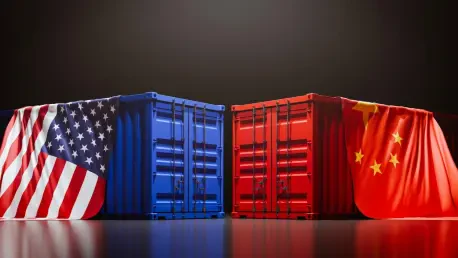In recent years, the trade relationship between the United States and China has experienced notable fluctuations, impacting both countries’ economies and the global market. This dynamic interplay reached a critical juncture when the two economic giants signed a trade deal, seemingly bringing relief but simultaneously raising questions about its long-term implications. The significance of this relationship stretches far beyond their borders, influencing global trade, investment patterns, and economic stability. This article investigates various perspectives on whether the trade deal offers a lasting solution or merely a fleeting relief amidst broader economic uncertainties.
Immediate Reactions and Wall Street Sentiment
As the ink dried on the new trade agreement, Wall Street responded with optimism, celebrating a potential reduction in trade tensions. Investors saw this as an opportunity to stabilize markets previously rattled by uncertainty. According to expert analysis, this initial positive reaction reflected a broader sentiment that a decrease in tariffs could invigorate economic exchanges between the United States and China. Yet, despite this upbeat mood, there remains a cautionary tale about underlying challenges, such as inflationary pressures that continue to linger as unresolved threats in the economic landscape.
The data guiding market sentiment reveals a more complex picture beneath the surface. Economic indicators and expert opinions highlight the potential for increased growth as tariffs are reduced, drawing parallels with past market responses to similar agreements. However, analysts emphasize that inflation concerns persist; although immediate threats might be mitigated, they are not entirely abolished. As stakeholders assess these impacts, they caution that the true test will be in sustaining long-term economic stability.
Assessing Economic Impact and Historical Context
The trade deal’s signature left many curious about its genuine economic implications. Experts observe surface-level benefits such as improved market confidence and potential GDP growth. Yet, the underlying economic impact remains a subject of debate. Historical case studies of previous trade agreements offer valuable insights, illustrating that while initial benefits often emerge, the long-term outcomes can vary significantly. These observations highlight the need to distinguish temporary relief from strategic gains, urging caution in overly optimistic forecasts.
Balancing opportunities and risks presents a pivotal challenge. With short-term tariff reductions sparking optimism, experts emphasize the importance of evaluating broader economic dynamics. This involves recognizing historical trends where trade agreements led to both positive and negative consequences. By navigating these intricacies, stakeholders can better align their strategies to capitalize on potential benefits while mitigating associated risks.
Emerging Trends and Geopolitical Considerations
As global trade policies shift in response to new economic realities, observers have noted emerging trends suggesting that the deal might signal broader changes in the landscape. Regional reactions to the agreement have varied, reflecting differing levels of reliance on the US-China trade channel. These variations underscore how the agreement could reshape trade practices, introducing opportunities for some while posing challenges for others.
Analyzing assumed outcomes, critics question whether this trade deal serves as a mere prelude to sustained economic peace. By scrutinizing the agreement’s durability and its alignment with geopolitical dynamics, experts highlight its potential role as a temporary diplomatic maneuver rather than a comprehensive solution. Such discussions invite further exploration into the deal’s capacity to withstand both political and economic pressures.
Broader Geopolitical and Global Trade Implications
The broader geopolitical landscape exerts a significant influence over trade strategies, prompting international observers to analyze the agreement’s strategic implications. A comparative analysis of global perspectives reveals varied interpretations of the deal, reflecting how different nations assess its impact on international relations and economic positioning. These assessments help forecast the trajectory of economic growth and diplomatic alliances in a dynamic global context.
Looking ahead, experts outline possible scenarios following the current trade agreement. Speculative forecasts suggest that successive negotiations might arise, shaping the framework of international trade. These potential developments underscore the need for proactive strategies in navigating a complex economic environment, where adaptive responses to evolving policies are key to maintaining competitive advantages.
Synthesis and Strategic Recommendations
In synthesizing insights from the analysis, certain key lessons from the trade agreement emerge. It is crucial for businesses to approach current trade realities with caution and strategic acumen, leveraging knowledge of economic patterns and preparing for potential market shifts. By embracing innovative practices and adapting to changing circumstances, entities can position themselves for long-term success amidst uncertainty.
Strategic recommendations emphasize the importance of vigilance and adaptability. Stakeholders are encouraged to continuously assess economic conditions and geopolitical dynamics, enabling them to make informed decisions that capitalize on opportunities while minimizing risks. It is through this proactive stance that businesses can thrive in the constantly evolving landscape of international trade.
Conclusion
The importance of maintaining vigilance in international trade relations resonated throughout discussions on the US-China trade deal. While the agreement offered a short-term respite from escalating tensions, it underscored the complexity of crafting enduring economic policies. As global markets adapt, strategic approaches to leveraging trade agreements prove essential. In moving forward, stakeholders must consider both immediate and long-term implications, positioning themselves to navigate an uncertain but potentially rewarding economic environment.









